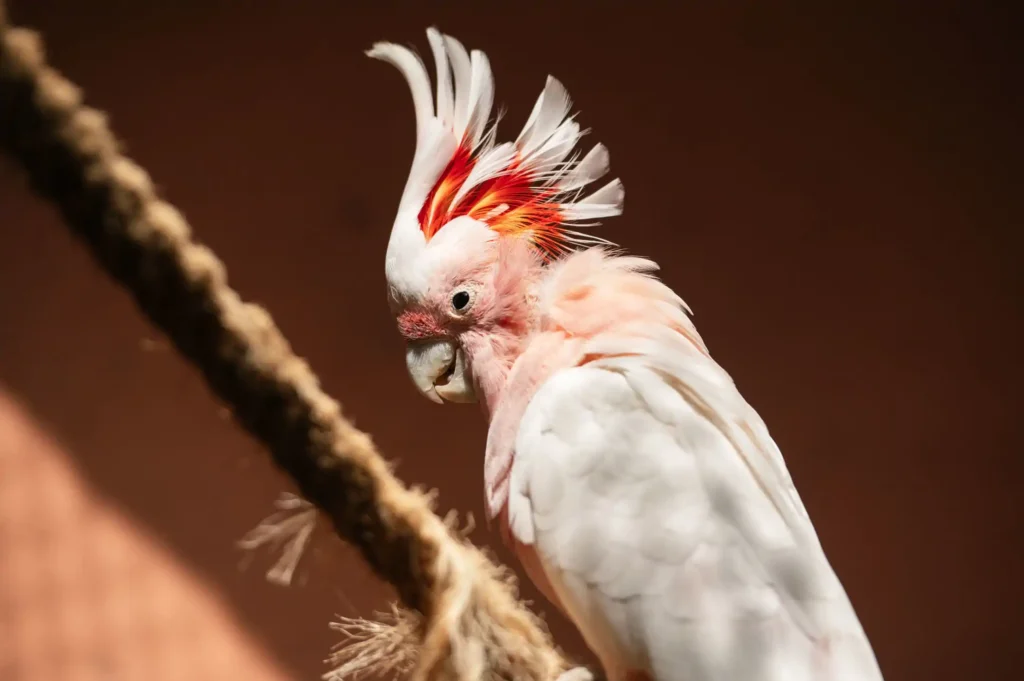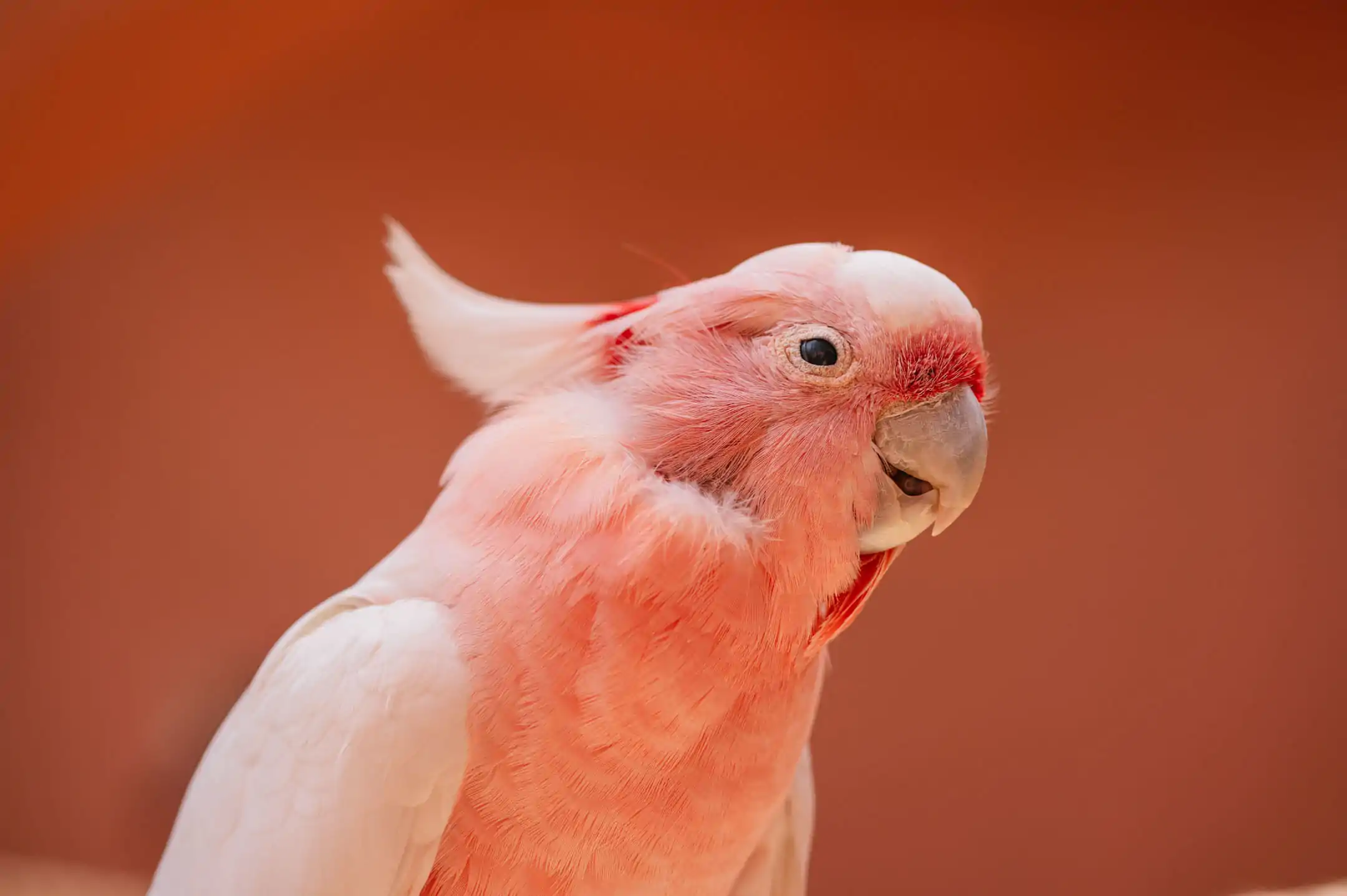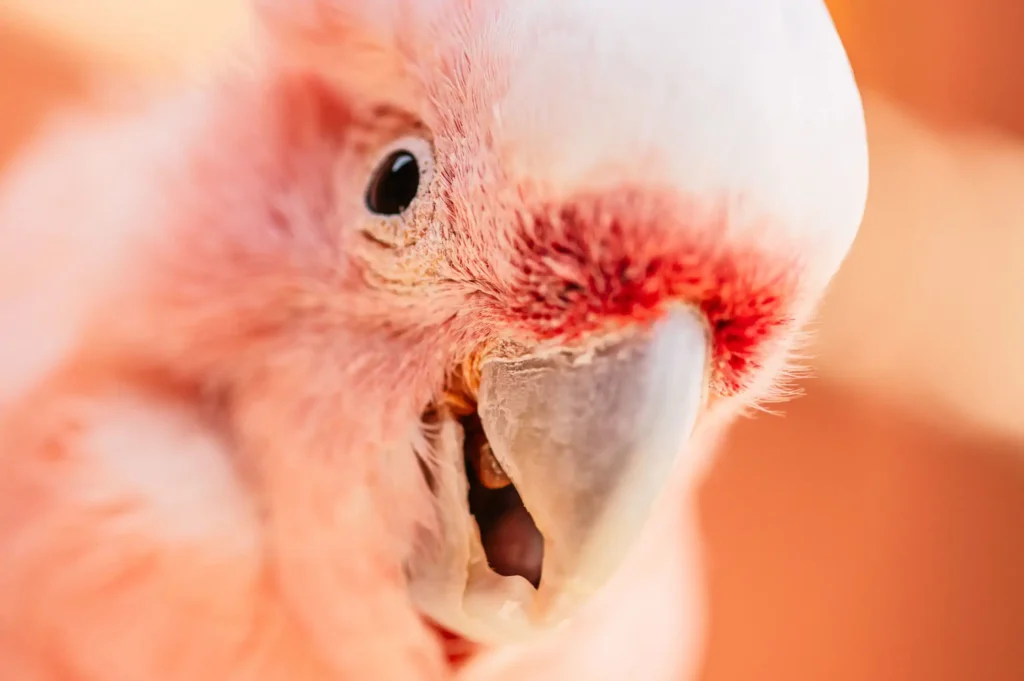Also known as the flag cockatoo because of the bright red and yellow colouring of the crest feathers.
In Spanish-speaking countries it also known as Spanish flag cockatoo because of the bright red and yellow colouring of the crest feathers, like the Spanish flag.
Physical features
Its length reaches up to between 33 and 40 cm and its weight can reach 480 gr.
The plumage of this cockatoo is stunning in its beauty. The upperparts are white with some shades of pink. The underside is a very attractive shade of pale. The crest exhibits three colours. The tips of the feathers are white, a pink stripe of greater intensity than the plumage appears at the height of the centre of the feathers, and under this stripe the base is yellowish.
Habitat
A species endemic to Australia with a wide distribution on the continent. It inhabits ecosystems ranging from arid zones to acacia and eucalyptus forests, but despite this, its adaptation to habitat changes is not remarkable.
Diet
The cockatoo’s diet is based, as in most psittacines, on seeds, herbaceous plants, nuts and fruit, which it collects both from the trees themselves and from the ground.
Reproduction
They use the hollows of large trees to make their nests, which they widen by breaking the bark with the force of their beaks. These nests are provided with a bed of wood chips, bark, etc., deposited by both parents.
After sexual maturity, which they reach between 3 and 4 years of age, they can lay their first clutch and both the male and female are responsible for incubating the eggs and feeding and grooming the chicks after hatching.
Behaviour
These cockatoos are animals which choose their territory subject to the availability of water, and may make some migrations if they inhabit arid areas due to water scarcity.
Threats
Habitat destruction due to urban encroachment, climate change and capture for the illegal exotic species market are the main threats to these birds.
Status and conservation
It is a species of cockatoo whose population remains stable but is nonetheless at risk due to threats and slow reproduction. This is why it is listed in Appendix II of the CITES Convention.





